25 SEPTEMBER | 6 MIN READ
Understanding the Different Model-Based Approaches: MBSE, MBD, and MBE
Difficult as it may be to accept, sometimes terminology can get in the way of innovation. A case in point is the “model-based” cluster of engineering design, manufacturing, and enterprise terminologies and methodologies under the model-based banner.
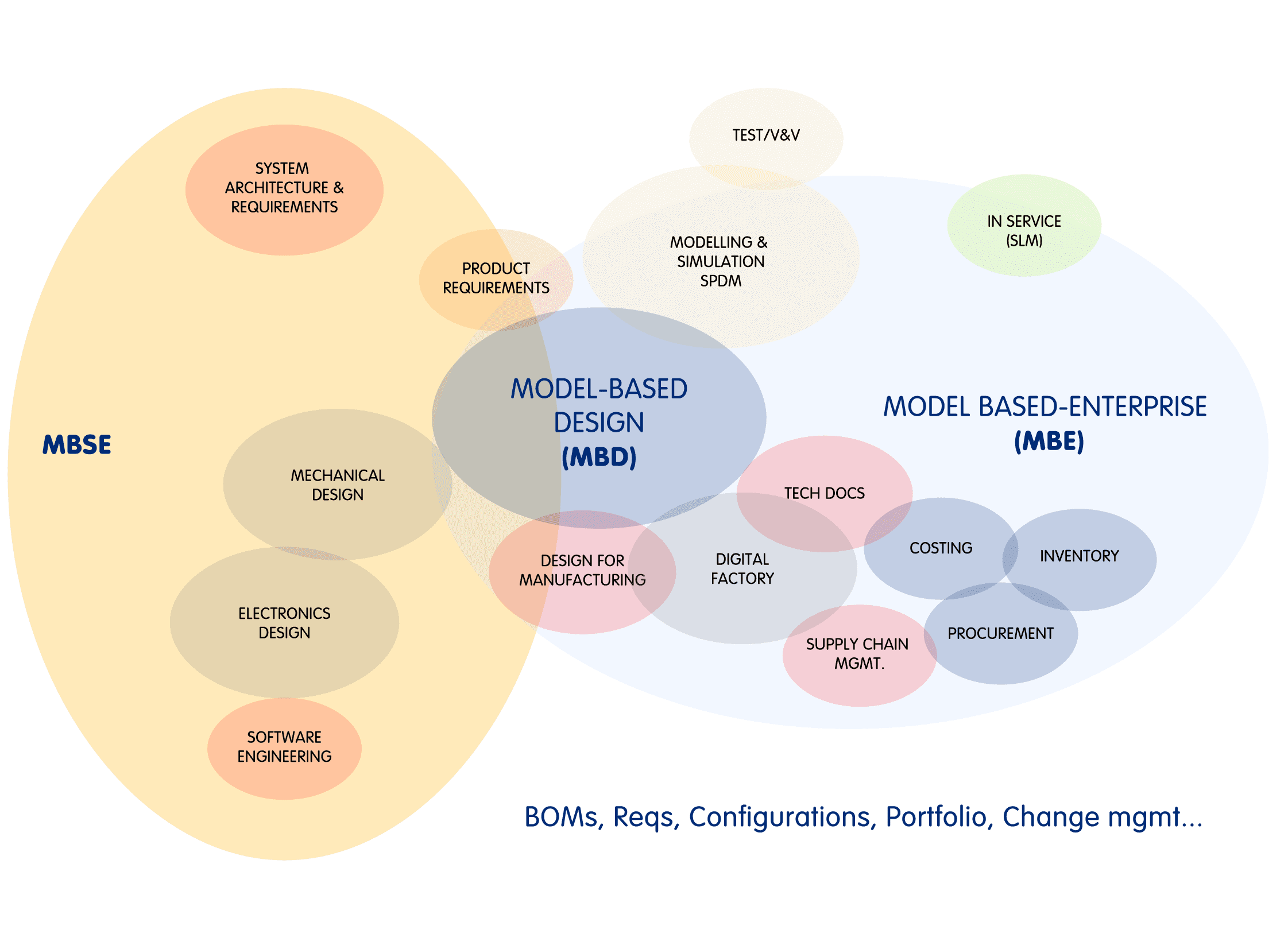
In the dynamic world of modern manufacturing and engineering, the acronyms MBSE, MBD, and MBE have been creating quite a buzz. These terms represent powerful concepts that are reshaping how products are designed, developed, and brought to market. But for those unfamiliar with this terminology, it can seem like a complex web of jargon. Fear not, for in this article, we will unravel the mysteries behind MBSE, MBD, and MBE, making these models more accessible and understandable.
The Digital Transformation of Manufacturing and Engineering
The manufacturing and engineering industries have undergone a profound digital transformation in recent years. Traditional paper-based processes and 2D drawings are gradually giving way to a more comprehensive and connected approach. This transformation is fuelled by digital models and a shift towards model-based practices.
1. Model-Based Systems Engineering (MBSE)
Let’s start with MBSE, which stands for Model-Based Systems Engineering. At its core, MBSE is a methodology that employs digital models to define and document complex systems. These models capture not only the physical components of a system but also its behaviour, requirements, and interactions. Think of it as a holistic approach to systems engineering, where the entire system is represented digitally, enabling better understanding, communication, and analysis.
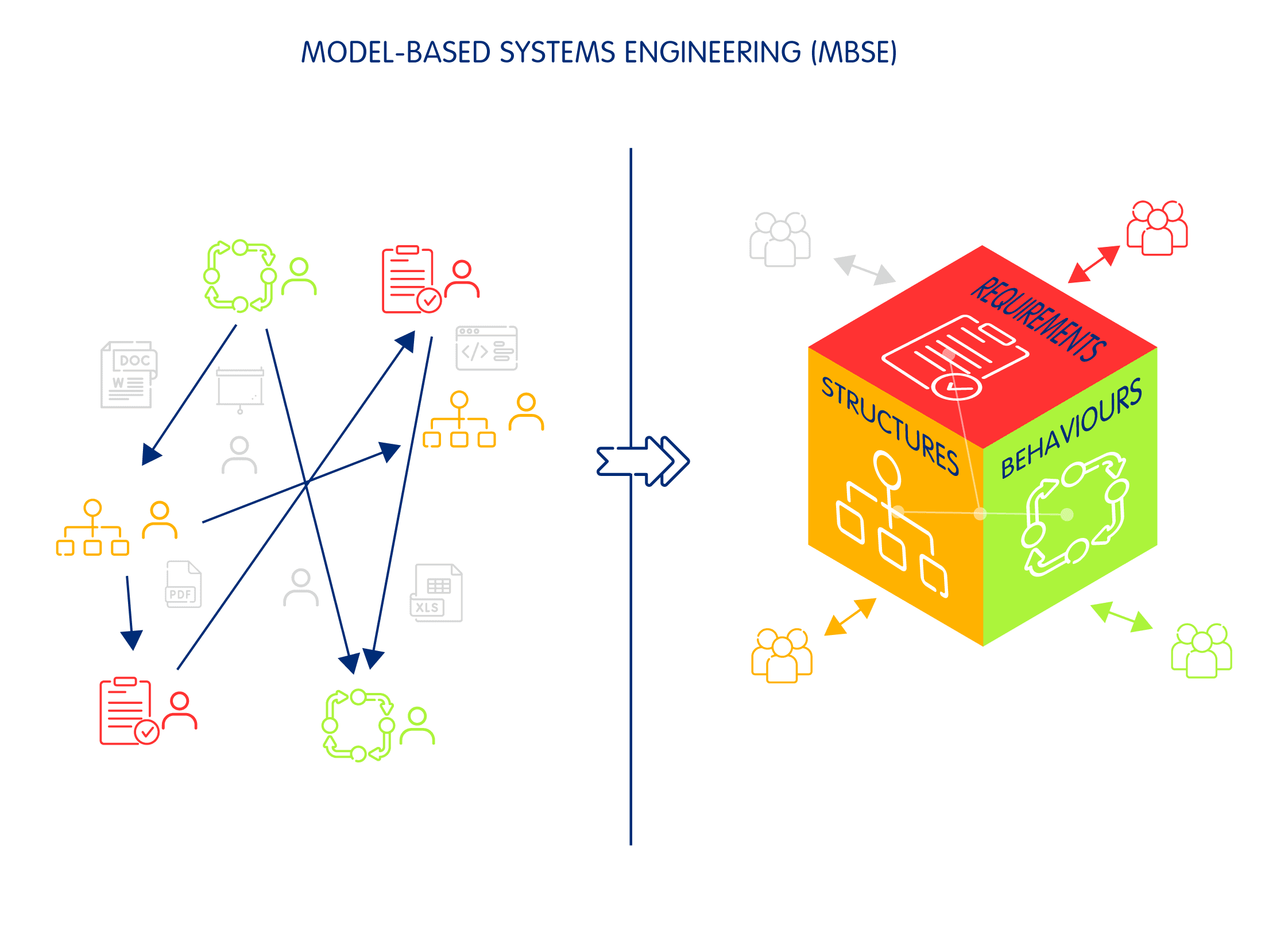
2. Model-Based Definition (MBD)
Moving along, we encounter MBD, or Model-Based Definition. MBD takes the principles of digital modelling and applies them specifically to the realm of product manufacturing. Instead of relying solely on 2D drawings, MBD uses 3D models as the authoritative source for all product information. This approach streamlines the design-to-manufacturing process, reduces errors, and fosters collaboration between design and manufacturing teams.
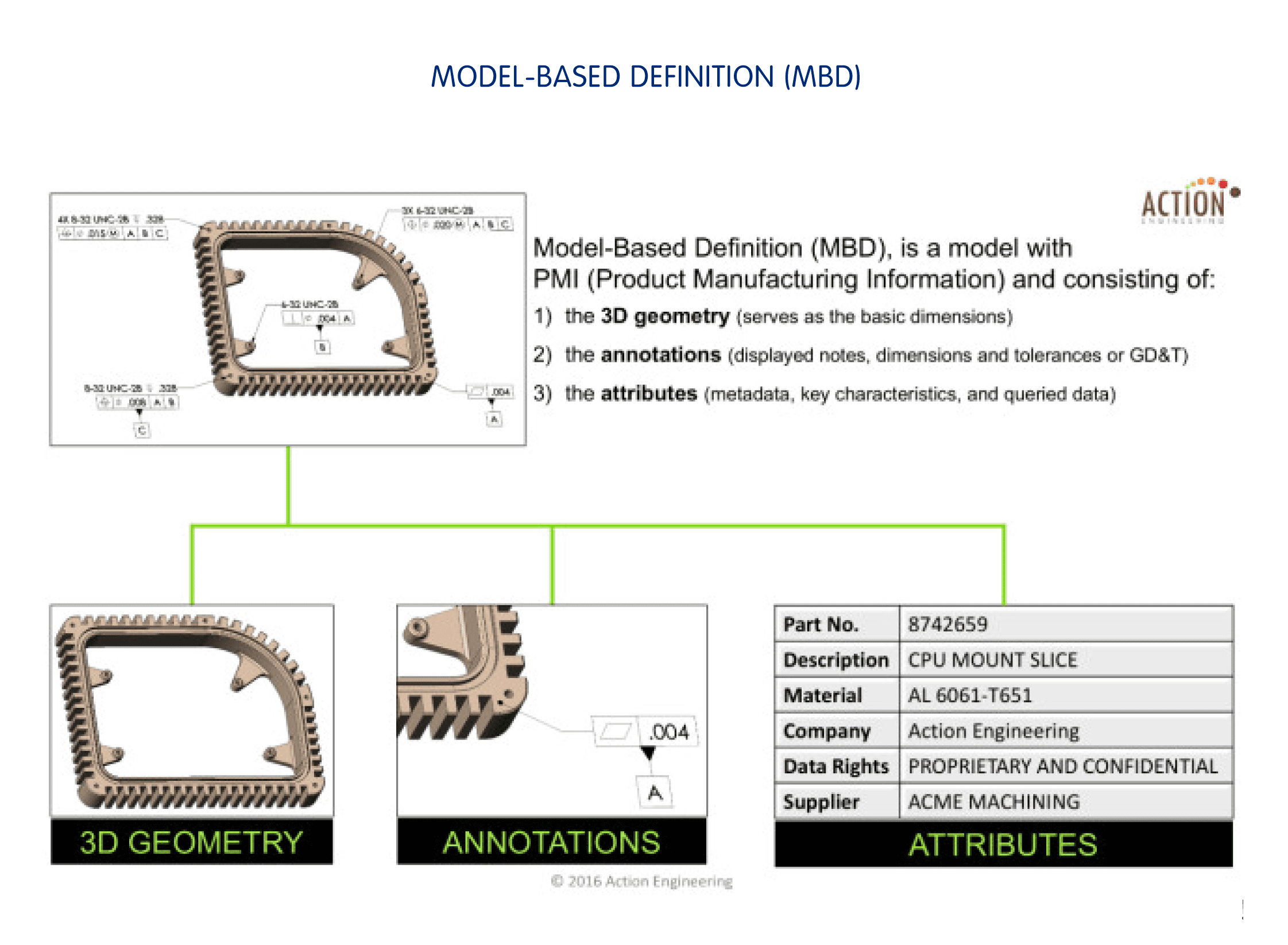
The Illustration shows the three elements of a complete model-based definition. (Image courtesy of Action Engineering).
3. Model-Based Enterprise (MBE)
Finally, we arrive at MBE, which stands for Model-Based Enterprise. It’s an engineering strategy that aims to clarify design during the manufacturing process by using the 3D MBD that includes all the product and manufacturing information (PMI) associated with manufacturing the product. MBE is the overarching concept that brings together MBSE and MBD. It represents a comprehensive strategy for an organisation to leverage digital models across the entire product lifecycle.
In an MBE, digital models are used not only for design and manufacturing but also for quality control, maintenance, and beyond. It’s about creating a digital thread that seamlessly connects every phase of a product’s journey.
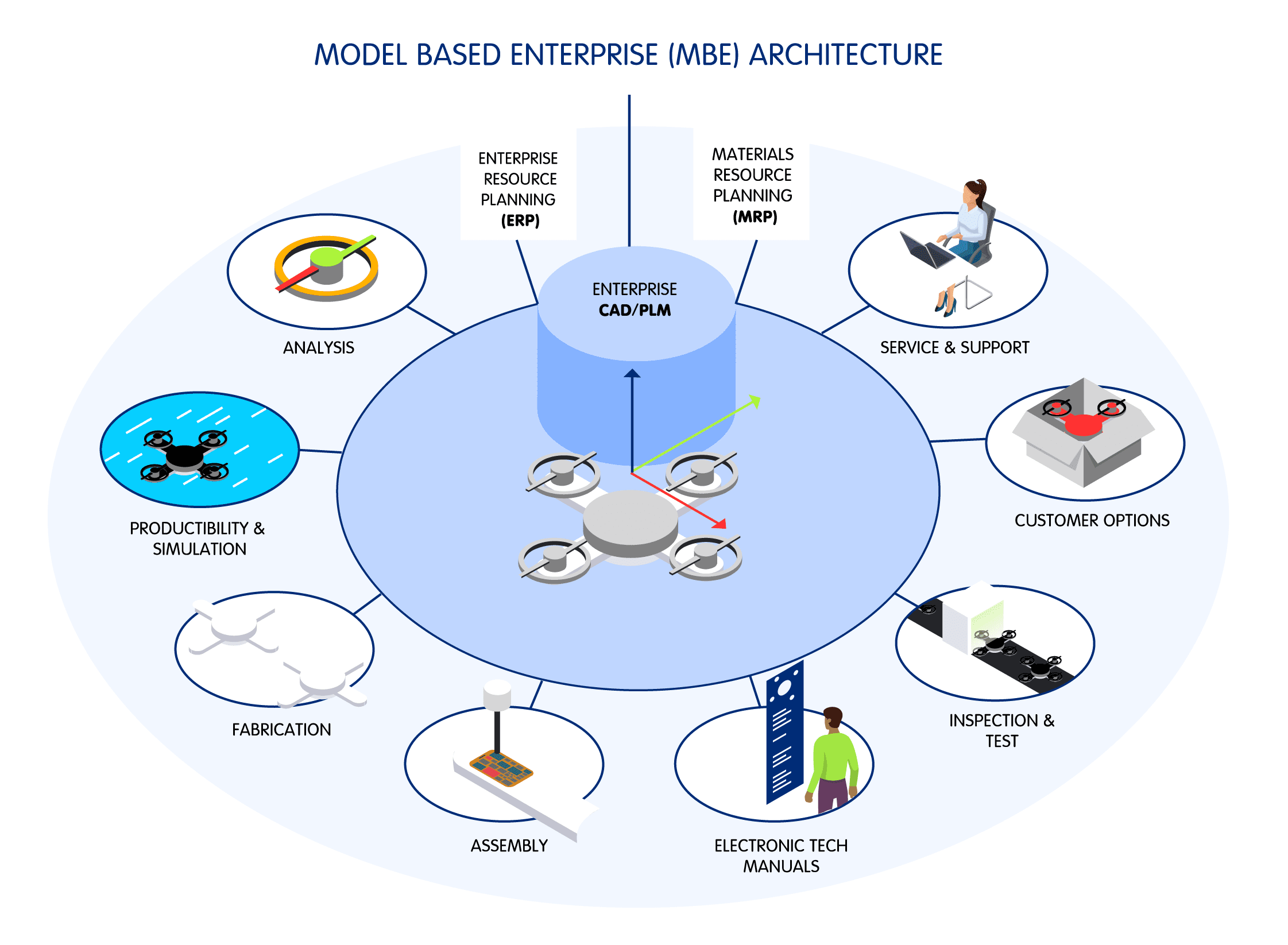
Bringing it all together
Now that we understand the terms a little bit, we can talk more about how they inter-relate.
Model-Based Definition is a part of the Model-Based Enterprise. Data from MBD may be digitally connected and re-used throughout the Design, Manufacturing, and Quality processes and in normal business areas like procurement, sales, sustainment, and beyond. We refer to this connectivity as the Digital Thread and a Model-Based Enterprise. As an enterprise makes these data connections, they become a part of Model-Based Systems Engineering to understand, control, and predict the processes that define the business.
A variety of data sources can contribute to the model including data from product materials in ERP systems, process plans from Manufacturing Process Management (MPM) systems, work instructions from Manufacturing Execution Systems (MES) and Quality-Control (QC) systems.
Only with PLM can MBE be enabled with the lifecycle data and process management it requires. When this is done, it will create a huge leap in raising your digital transformation maturity.
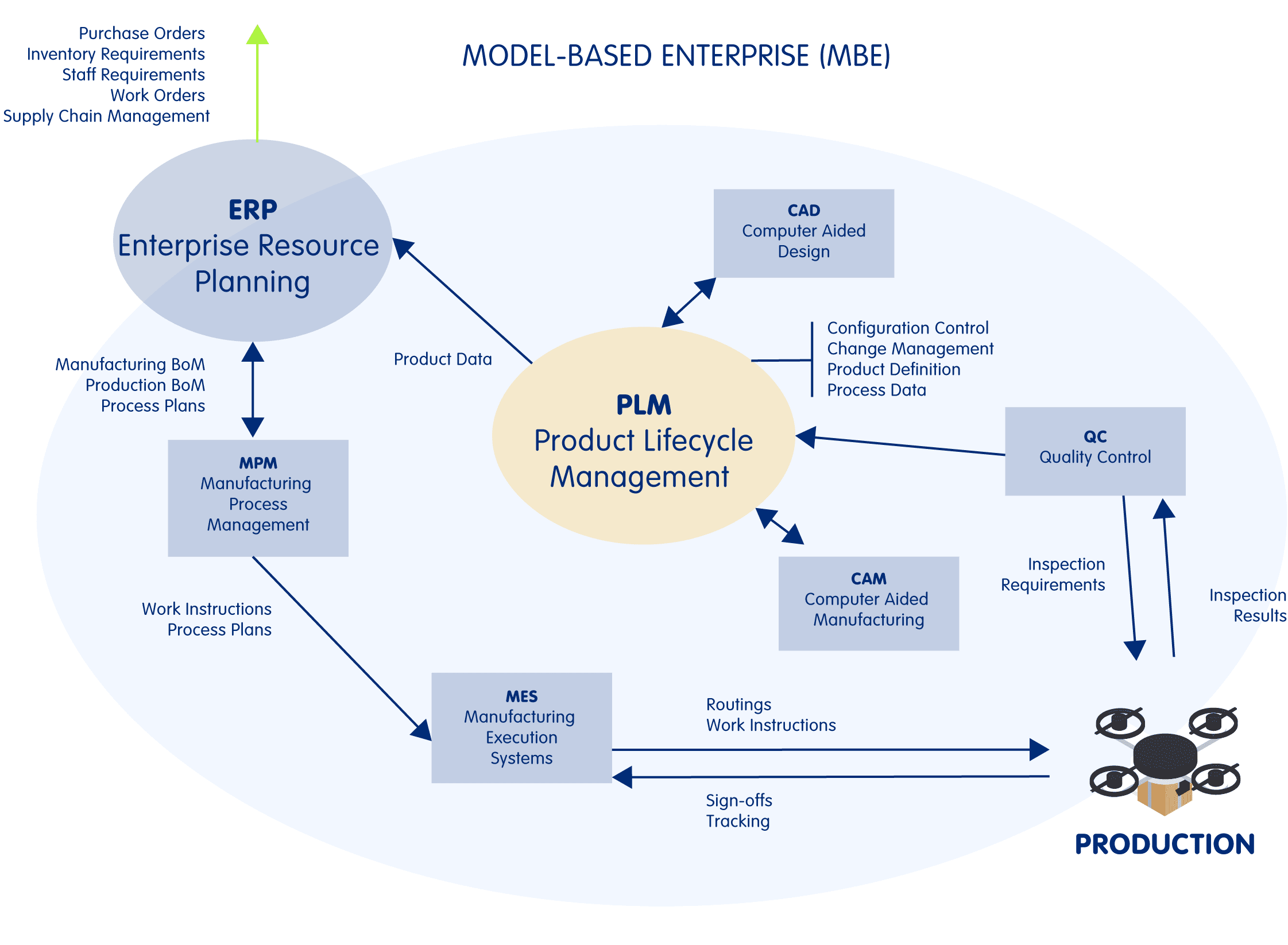
The Benefits of Embracing the Models
Now that we’ve shed some light, you might wonder why these models really matter to the company. The answer lies in the transformative potential of these models. By embracing MBSE, MBD, and MBE, companies can:
- Improve Efficiency: Digital models enable faster design iterations, reducing time-to-market.
- Enhance Quality: With a single source of truth, errors and inconsistencies are minimized.
- Boost Collaboration: Teams can work more cohesively across disciplines and geographies.
- Embrace Innovation: Digital models open doors to advanced technologies like IoT and AI.
- Adapt to Change: Organisations become more agile in responding to market shifts.
In the coming weeks, we will delve deeper into each of these models, exploring their applications, benefits, and challenges. We will also look at real-world examples of how leading companies are leveraging MBSE, MBD, and MBE to stay competitive in an ever-evolving landscape.
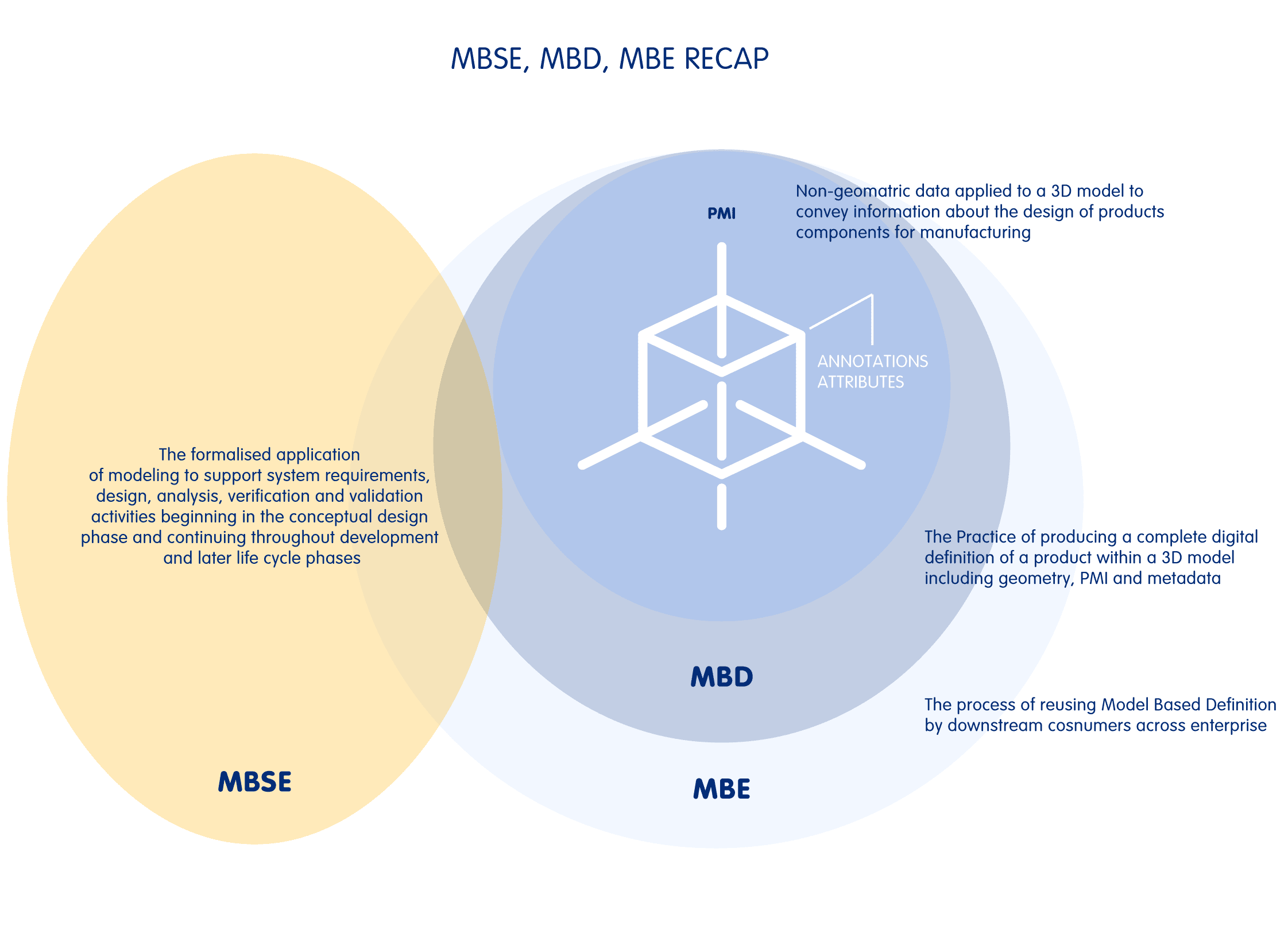
So, whether you’re a seasoned professional or new to these concepts, join us on this journey to demystify the models that are reshaping the future of manufacturing and engineering. It’s a world where the digital twin reigns supreme, and where innovation knows no bounds.


